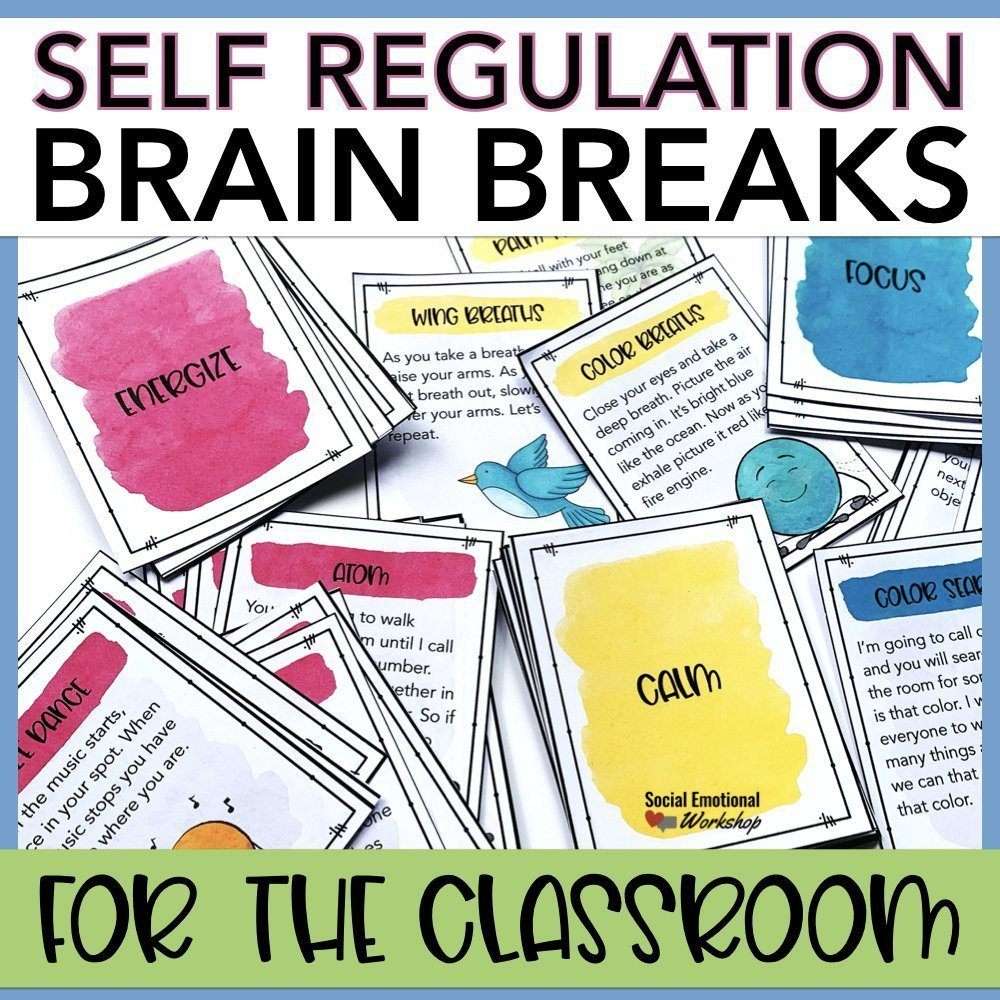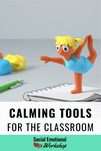A calm classroom doesn't have to mean a quiet one. It is a classroom where students are taught and practice being in charge of their feelings and behaviors. This can be through calm corners, guided breaks to reset, steps to resolve peer conflicts, flexible seating, or lessons to help students find their preferred strategies.
Calm Corners
Calm corners are popping up on social media and with good reason. They send the message that in this classroom, we understand that everyone has big feelings and deserves the space to work on managing them. It puts strategies up front and communicates that we can solve our problems.
For calm corners to work effectively, students must be taught how to use them. They need procedures just like anything else in the classroom. The linked post reviews six procedures for a calm corner that are essential: Going to the Calm Corner, In the Calm Corner, Strategy Use, Leaving the Space, Rejoining the Class, and Class Response. Once your calm corner is up and running, it is also a great way to manage the needs of all your students.
Calm corners are not Time-Out under a nicer name. The spirit behind calm corners is teaching self-regulation, not punishing. Keep your consequences outside of that space.
Are you interested in getting a calm corner setup in your classroom or office? Check out this post on Creating a Calm Corner.
Personalized Strategies
One key to calming strategies we need to discuss more is helping students personalize them. Students need the opportunity to try different approaches, reflect on how they work for them, and create a strategy toolkit they can use independently.
Try a whole-class lesson on coping strategies using the following process.
- Identify different feelings.
- Identify when big feelings happen.
- Try out different calming strategies.
- Reflect on which calming strategy would work best for you.
- Create a plan by matching strategies to situations.
Calming Activities
You know the situation. Students return from recess and have some amnesia that makes them forget they are now inside the classroom. Or students are half asleep late in the afternoon after a long day.
We must build in whole class activities that help reset the students before moving on. Think about times in your schedule when students are out of sorts, for lack of a better word. Build in a 5-minute break where you reset.
In that break, I want you to respond to the students in front of you. Do they need something to energize them, calm them, or refocus them? After recess, usually, we need some calming activities. After two heavy academic periods, we might need 5 minutes to breathe and refocus.
Calming Tools
Affiliate links are used here. They provide a small commission to help run the site and do not cost you anything to click or purchase.
Calming tools can be used during instruction, too. One year, the school counselor and I put together calming toolkits for every classroom. It was big storage container filled with calming items they could use for different students as they saw fit.
Bouncy bands for chairs. These are great! It lets students move their legs without disturbing others.
Do you need something cheaper? Buy a roll of theraband (green is a good weight), cut the length, and tie it to the front legs of the chair.
Move N' Sits or Disc O' Sits are another excellent way for students to move around in their chairs and get some sensory input, all while not disturbing others.
Velcro is the ultimate fidget. Put it on the underside of a student's chair or their desk. They can rub the velcro when they are looking to fidget.
Sound machines. Most teachers set them up as a station in the room or as part of their calm corner.
What Calming Tools Will You Use?
A calm classroom is where self-regulation is front and center, practiced, and embedded into the daily routine. It is not an extra thing but rather an understanding that students need tools to regulate their feelings and behaviors throughout the day, just like all of us do.
What calming tools do you use in your classroom?
Helpful Resources
Calming Strategies Lesson
A small group calming strategies lesson where students will explore 24 different coping skills that will help improve their self-regulation. This easy, printable lesson comes with student cards and worksheets to help them find their best calming strategies and learn when they should use them.









